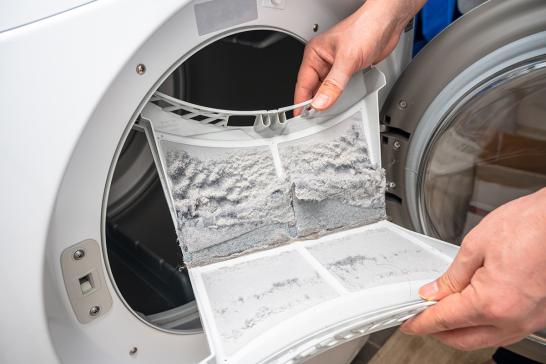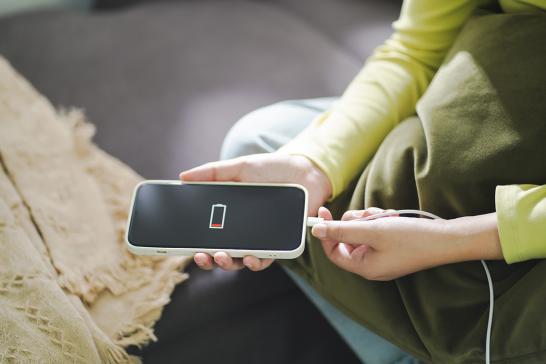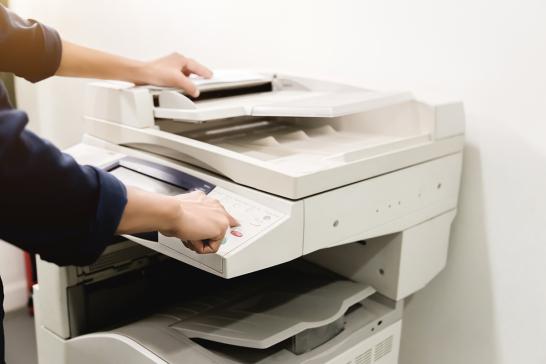

That enemy is dust... but so is the vacuum cleaner!
As dust gathers in a device, the risk of overheating, poor contacts, struggling fans and even short-circuiting increases. So keep your electronics away from dust as much as you can: don’t put them on the floor, vacuum your living room or office a bit more often... But whatever you do, DON’T VACUUM YOUR DEVICE! Vacuum cleaners can generate static electricity around the nozzle. If that static is transferred to the fragile components of, say, your computer, it’s game over. Literally.
Have you vacuumed your computer in the past and it lived to tell the tale? If so, you were lucky. The internet is full of stories about electronic devices that ‘inexplicably’ (but cleanly!) gave up the ghost. Dusting your device is a good idea, however, especially around the ventilation slits. Use compressed air for this, and briefly grab hold of something like a faucet first, to ground your own body.
Fight limescale with the right remedies
Appliances that use water suffer from a build-up of limescale. Even if you use bottled water in your coffee machine, for example, you regularly need to descale it. Be careful what you use! Vinegar is a traditional remedy, but it can damage the components. The idea that some appliances need specific limescale removers is not just sales talk. The same applies to the detergent you use in your washing machine and dishwasher: only use products that the manufacturer recommends. For example, don’t use washing-up liquid to clean a dishwasher or washing machine. Washing-up liquid will literally make your machine froth at the mouth; the result is damage to the motor and a floor that needs mopping.
Some don’t like it hot
Most electronic devices don’t like extreme temperatures. Temperatures that are too low are always bad for batteries (see our battery blog post). At about -10°C, LED screens start struggling too. If the surrounding temperature of a device such as a laptop goes from cold to hot very quickly, condensation may form on the inside of the device. It’s best to let the device warm up for a while before running an electrical current through it.
Temperatures that are too high can also have a detrimental effect on a device’s lifespan. Most electronic devices produce quite a bit of heat themselves. So always make sure there is enough space for ventilation around a device and don’t stack too many devices that get hot. Putting your electronic devices near a sunny window is simply asking for problems.
With thanks to Let Me Repair for their input.



